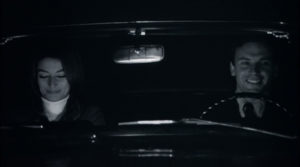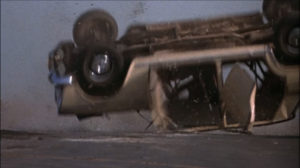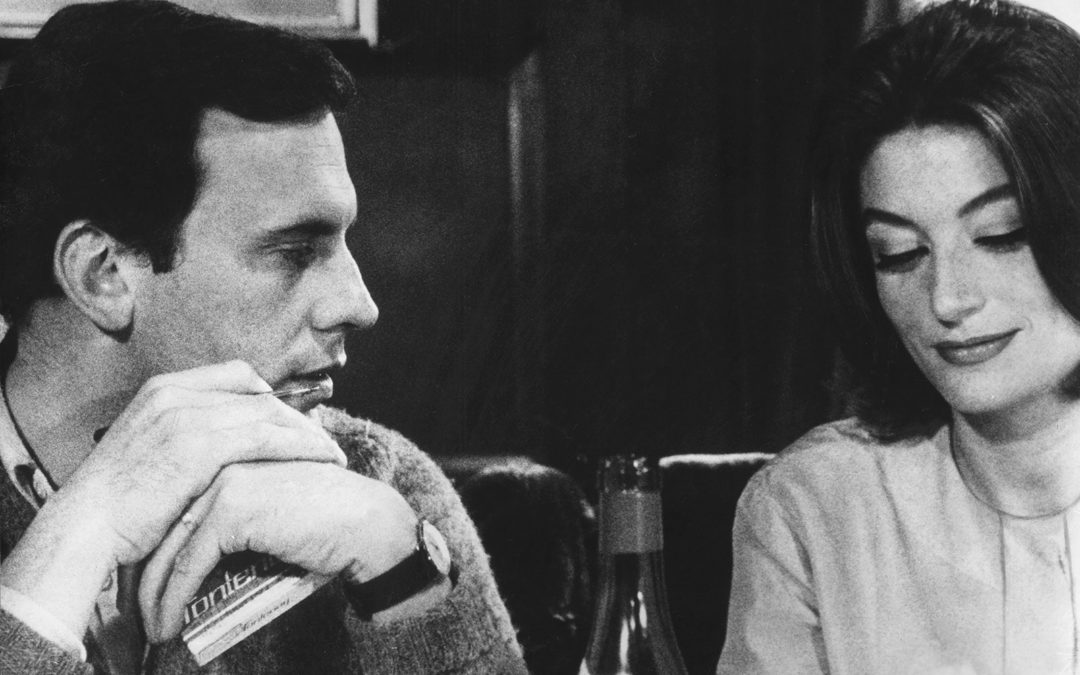Love is complicated and takes many forms; the love you feel for your parents, your friends, and your significant other are all different but still considered love. What would happen if the love you felt for somebody was still there, but the person was gone? The 1966 film Un Homme et une Femme or A Man and a Woman directed by Claude Lelouch explores the answer to that question through a man named Jean-louis Duroc (Jean-Louis Trintignant), a woman named Anne Gauthier (Anouk Aimée) and their untimely love story.
The film is nowhere near an action film but let me tell you, the story had me on the edge of my seat the entire time! The narrative begins with showing the two different timelines of Jean-Louis and Anne. Both of them are spending time with their child but they are doing totally different things; Jean-louis is letting Antoine, his son (Antoine Sire), drive his mustang while sitting in his lap and they do donuts on a beach, while Anne and Françoise, her daughter (Souad Amidou), go shopping and they look for a bakery to eat a slice of cake. Right from the start, the entire film is full of opposites. One second the setting will be calm and collected, and then the film instantly cuts straight to something loud and chaotic. For instance, Jean-louis and Anne meet each other by chance and he offers her a ride home. On the way to Paris, they discuss their relationship status and Anne reminisces about her husband (Pierre Barouh) who was a stunt double. From the quiet, peaceful car, the scene cuts to explosions, loud crashes, and crazy stunts. Eventually we find out that her husband died, but the way that she talks about her husband and the way the flashbacks were portrayed, makes it seem like he was still alive. The pattern between every other is what made me anxious throughout the film because I expected something bad to happen after something good, but the pattern wasn’t consistent or predictable, so I was always eagerly anticipating what was going to happen next.

Anne (Anouk Aimée) and Jean-louis (Jean-Louis Trintignant) driving to Paris.

A chaotic memory of Anne’s husband (Pierre Barouh) as a stunt double crashing cars.
Another aspect that was interesting was Lelouch’s use of color throughout the film, or lack thereof. From determining the patterns throughout the film, it seemed as though he would use black and white when the scene was nighttime or for Jean-louis’ memories. There would be color when the scene was daytime or for Anne’s memories. He also incorporated a sepia look to certain parts of the film which I believe are scenes that represent important memories or moments in Jean-Louis’ life. I say Jean-louis’ life because, while we see flashbacks from Anne’s life and they are the memories as she remembers them, we are still viewing them from a third person perspective which puts us in the place of Jean-louis. Because we are the viewer, we are placed in the middle knowing that this is Anne’s memory, but we are not in the place of Anne herself.
In this film and Le Bonheur (1965), both directors find ways to represent the feeling present in a particular memory, in this case Un Homme et une Femme uses the changing of color. Anne’s memories are in color because she remembers them vividly, can recall almost every detail and the memories about her husband are important to her, but in Le Bonheur, parts of scenes use repetition because the memory was such a prominent event and will surely play over and over in their head, i.e., François (Jean-Claude Drouot) embracing Thérèse’s (Claire Drouot) dead body for the first time. Jean-louis’ memories are in black and white because they don’t mean all that much to him. In particular, Jean-louis tells Anne about his nighttime job which is being a pimp vs his daytime job of being a race-car driver. He has a memory of gathering the money from his workers and the scene is in black and white. The job had no significance to him, hence the black and white. On the other hand, about halfway through the film, we get the backstory to how his wife died, and the scene is in sepia. He had a big race car crash that put him into a coma, due to his critical state his wife took her own life out of a nervous breakdown. We know we aren’t viewing this from Jean-louis’ perspective because he is in a coma, but nonetheless, his wife’s death was a life changing point in his life. There are other scenes too where the small things like going out to eat with Anne for the first time or talking about life with her that are portrayed in sepia.
Towards the end of the film, she says she loves him over telegram, and he drives 3000 miles straight to see her. In every relationship there is a puppy love stage, and Jean-louis definitely fell right into the trap. They start to make love but during, Anne gets flashbacks of her husband and they stop. She is not over him and takes the train home instead of having Jean-louis drive her. For once, instead of being placed in just Jean-louis’ shoes, they both flashback to a memory they created together—that is in sepia— and we know that they are regretting their decision to stay friends. He drives to the train station where she changes trains, she runs to him and they embrace.

Anne and Jean-louis have dinner together.
This film was the outlier compared to the themes of the other three films in this issue, but still, Lelouch did a wonderful job at centering his film around the emotion behind love, loss, and death. To create a specific feeling within a film without using abstractness or being explicit is difficult and takes a very creative mind to come up with ideas of exactly how they want to replicate that feeling visually, but Lelouch did it flawlessly. The French New Wave helped directors reach deep into the parts of their lives or minds that sparked a flame and they were able to create something beautiful out of the spark, like how love can conquer through all and its okay to feel love for someone even if they’re gone.


Recent Comments